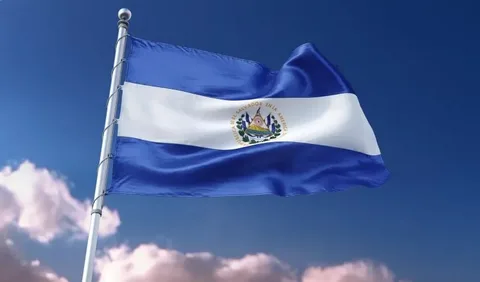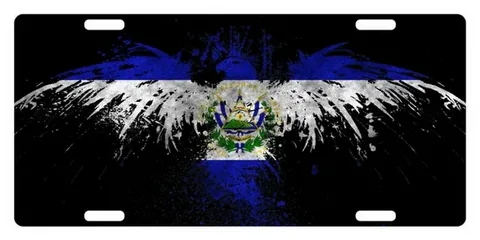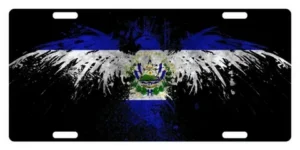El Salvador Flag: A Symbol of Unity and Heritage
Table of Contents
The flag of El Salvador is more than just a piece of cloth; it is a representation of a nation’s identity, history, and pride. With its vibrant colors and rich symbolism, the flag tells the story of El Salvador’s journey through time. In this article, we will take a deep dive into the history, design, and significance of the El Salvador flag, exploring its various aspects and answering some of the most commonly asked questions about it.
The History of the El Salvador Flag
The story of the El Salvador flag dates back to the early 19th century when the country, along with other Central American nations, was fighting for independence from Spanish rule. The flag’s design has evolved over the years, reflecting the political changes and aspirations of the Salvadoran people.
The Design and Meaning of the Flag
The El Salvador flag consists of three horizontal stripes: blue, white, and blue. The two blue stripes represent the Pacific Ocean and the Caribbean Sea, while the white stripe symbolizes peace and unity. In the center of the flag is the national coat of arms, which features a golden triangle, five flags, and various other elements that represent the country’s history and values.
The Coat of Arms
At the heart of the El Salvador flag, the coat of arms is an intricate design that holds deep significance. The golden triangle represents equality, and inside the triangle are five volcanoes, symbolizing the unity of the five Central American countries. Above the triangle is a red Phrygian cap, a symbol of liberty, and rays of light emanate from it, representing glory and pride. Surrounding the coat of arms is a wreath of laurel leaves, symbolizing peace, and a banner that reads “República de El Salvador en la América Central.”
The Importance of the Blue and White Colors
The colors of the El Salvador flag carry powerful meanings. Blue represents the country’s wealth of natural resources, particularly its access to the ocean. It also signifies the Salvadoran sky, symbolizing hope and opportunity. The white color represents peace and unity among the Salvadoran people, emphasizing the nation’s desire for harmony and cooperation.
The Flag’s Role in Salvadoran Independence
The El Salvador flag played a key role in the country’s fight for independence from Spain. In 1824, after El Salvador became part of the Federal Republic of Central America, the flag’s colors were chosen to represent the ideals of the new federation. Although the federation dissolved in 1839, El Salvador retained the blue and white colors in its national flag, signifying the enduring legacy of its struggle for independence.
Variations of the Flag Over Time
Throughout its history, the El Salvador flag has undergone several changes. In the early years of independence, the flag featured different symbols and designs depending on the political climate. For instance, during periods of military rule, the flag sometimes included military emblems. However, the current version of the flag, with the national coat of arms at the center, has remained unchanged since 1912.
The Flag’s Role in Modern El Salvador
Today, the El Salvador flag is a powerful symbol of national pride and unity. It is displayed prominently at government buildings, schools, and public events. On national holidays such as Independence Day, Salvadorans come together to celebrate their heritage by waving the flag and paying homage to their country’s history.
How to Properly Display the El Salvador Flag
There are certain protocols that Salvadorans follow when displaying their national flag. The El Salvador flag should always be flown with respect and honor. When displayed vertically, the blue stripe should be on the left, and when flown horizontally, the coat of arms should always be positioned upright. On occasions of mourning, the flag is flown at half-mast to honor the lives lost.
Celebrating Flag Day in El Salvador
Flag Day, celebrated on May 17th, is a significant event in El Salvador. On this day, Salvadorans take pride in their flag by holding parades, ceremonies, and other patriotic events. Schools often organize activities where students learn about the history and importance of the El Salvador flag, ensuring that future generations appreciate its value.

The Flag as a Symbol of International Unity
While the El Salvador flag is a symbol of national identity, it also represents the country’s commitment to international peace and cooperation. The inclusion of the Phrygian cap in the coat of arms signifies liberty not just for El Salvador but for all nations. El Salvador’s role in international organizations like the United Nations and its participation in peacekeeping missions further emphasize the flag’s global significance.
The Flag in Salvadoran Culture
The El Salvador flag is not just a political symbol; it is deeply embedded in Salvadoran culture. It can be seen at sporting events, cultural festivals, and even in Salvadoran art. Artists often incorporate the flag’s colors and symbols into their work, creating a visual representation of national pride. Additionally, Salvadorans living abroad often display the flag to maintain a connection to their homeland.
The Flag’s Role in Sports and International Events
In sports, the El Salvador flag serves as a rallying point for athletes and fans alike. During international competitions such as the FIFA World Cup or the Olympic Games, Salvadoran athletes proudly bear their national flag, representing their country on the global stage. The flag becomes a symbol of hope, pride, and determination for both the athletes and their supporters.
The Flag’s Influence on Other Central American Nations
The design of the El Salvador flag shares similarities with the flags of other Central American countries, such as Honduras and Nicaragua. This reflects the shared history and cultural ties between these nations. The blue and white stripes, in particular, are a common feature in the flags of many Central American countries, symbolizing their unity and common heritage.
What the Flag Means to Salvadorans Today
For many Salvadorans, the El Salvador flag is more than just a national emblem; it is a symbol of their identity, culture, and resilience. Despite the challenges the country has faced over the years, the flag remains a constant reminder of the Salvadoran people’s strength and determination to overcome adversity.
Conclusion
The El Salvador flag is a powerful symbol that represents the country’s history, values, and unity. From its role in the fight for independence to its modern-day significance, the flag holds a special place in the hearts of Salvadorans. Its colors and symbols reflect the nation’s natural beauty, its commitment to peace, and its enduring pride. Whether flown at a national event or displayed in a home abroad, the flag serves as a reminder of the rich heritage and bright future of El Salvador.
FAQs:
What do the colors of the El Salvador flag represent?
The blue stripes represent the Pacific Ocean and the Caribbean Sea, while the white stripe symbolizes peace and unity.
When was the current El Salvador flag adopted?
The current version of the flag was officially adopted in 1912.
What is the significance of the coat of arms on the El Salvador flag?
The coat of arms features symbols representing liberty, equality, and unity, such as the golden triangle, the Phrygian cap, and five volcanoes.
How is the El Salvador flag displayed during mourning?
During mourning, the El Salvador flag is flown at half-mast to honor those who have passed.
Why is the El Salvador flag important to Salvadorans?
The flag is a symbol of national pride, unity, and the country’s rich history, representing the struggles and achievements of the Salvadoran people.














Post Comment